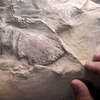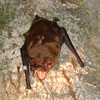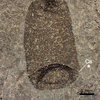A New Exoplanet on the Scene

An artist's rendering of LHS 475 b. (Source: The European Space Agency)
The James Webb Space Telescope has discovered a new planet, its first since the telescope commenced operations one year ago. The exoplanet (any orbiting planet that lies beyond our solar system) was previously speculated to exist based on transitory readings from the planet’s star. Now that there is confirmation of LHS 475 b’s existence, the work begins to assess whether the planet has an atmosphere. The JWST is uniquely suited to this task among telescopes, able to produce advanced readings on light’s refraction through gas on distant planets.
The JWST is able to assess a planet’s atmosphere via its NIRSpec (near-Infrared Spectrograph) instrument. As light travels through gas, it is refracted across a spectrum that can be read by the NIRSpec. This allows greater insight into the formation of a given planet and aids in the search for an Earth-like body. Now the telescope will turn its eye on other exoplanets planets thought to exist, but till now could not be confirmed.
Planets beyond our solar system were long speculated to exist, but definitive proof eluded scientists until 1992, with the detection of three planets orbiting PSR B1257+12. Since then, over 5,000 exoplanets have been discovered, a number that is sure to rise with the advanced JWST now operational. Part of the search for exoplanets includes identifying planets similar to Earth that may harbor life. In the case of LHS 475 b, the planet is remarkably similar to Earth in size, though its temperatures hover about 100 degrees Fahrenheit hotter than here at home.

The NIRSpec instrument being installed into the James Webb Space Telescope. (Source: NASA)
LHS 475 b is our cosmic next door neighbor, situated in the Octans constellation a mere 41 light-years from Earth. The planet circles a small red dwarf at a quick pace, completing an orbit in about two Earth days. It is the first in a backlog of unconfirmed exoplanets the JWST will now examine to confirm their existence. In the case of LHS 475 b, it took only two transits in front of its star for the JWST to detect its presence, an unprecedented speed.
This discovery kicks off what is sure to be a productive year for the JWST. Beyond its search for Earth-like planets, the telescope is geared towards examining early galaxies that formed right after the Big Bang. It will also face some healthy competition, with both the Chinese and Japanese space agencies having announced their own space telescope missions on the docket this year. With new rocket tests and an orbital mission around Jupiter and its moons scheduled, 2023 is sure to be an eventful year for space discoveries.
Read More!
Jakobsen P, Ferruit P, Alves de Oliveira C, et al. The Near-Infrared Spectrograph (NIRSpec) on the James Webb Space Telescope I. Overview of the instrument and its capabilities. arXiv.org. Published online 2022. doi:10.1051/0004-6361/202142663
NASA's Webb Confirms Its First Exoplanet.” Edited by Jamie Adkins, NASA, NASA, 9 Jan. 2023, https://www.nasa.gov/feature/goddard/2023/nasa-s-webb-confirms-its-first-exoplanet.
Seager S, Dotson R. Exoplanets. University of Arizona Press; 2010.
Featured Product
Joe Frazier Boxing Glove
Cool Things!

Is “Paul is Dead” Dead?: Unpacking One Of Pop Culture’s Most Enduring Conspiracy Theories

Scientists Discover Hooves and Skin in Preserved Dinosaur "Mummies!"
A dinosaur discovery just in time for Halloween! In a new analysis of a group of fossils from Wyoming, Scientists have determined this group of fossils are dinosaur “mummies,” with preserved skin and even hooves.

Scientists Record a Bat Catching Birds Mid-Flight!
Bats, birds, screeches, oh my! In a reverse-Hitchcock twist, a new study reveals that a species of European bat catches and eats birds mid-flight.
Specimen Deep Dives

The House that Ruth Built: The Story of the Old Yankee Stadium

The Queen of the Skies: the Story of the Boeing 747

Old Ironsides: The USS Constitution and the Start of the U.S. Navy
Long Form Articles

The Artist Behind the Macintosh: Susan Kare and Apple Computers
While the two Steves, Jobs and Wozniak, are the most well known faces behind Apple computers, equally important to the products and culture of the company were those who crafted the experience of using their computers through design. The most notable of these visual architects was Susan Kare, a designer responsible for “humanizing” Macintosh computers.

Can I Lick It? Yes You Can!
Have you ever been unable to tell if a fossil was really a fossil, but you were too embarrassed to admit it? Have you ever wanted to lick a fossil just because, but you didn’t want to risk judgment from your peers? Well, good news! You can kill two birds with one stone! Licking a fossil can actually help you determine if it’s the real deal or just another rock.

Is It Legal To Own a Meteorite: How to Start Your Outer Space Collection!
Meteorites are some of the rarest geological specimens to be found on Earth. Of course, since these stones are not of our world, purchasing them can sometimes be a confusing process. Is it legal to own a meteorite? In short, yes! Read on for help starting your cosmic collection!


















